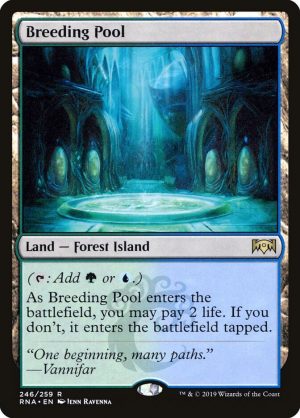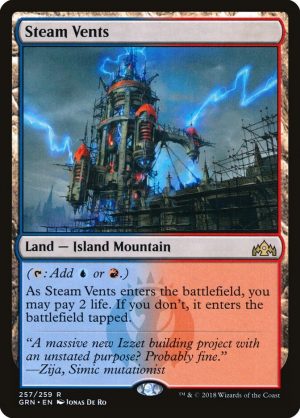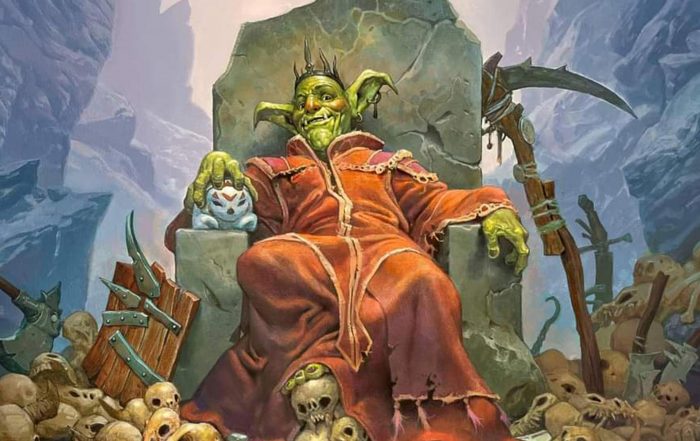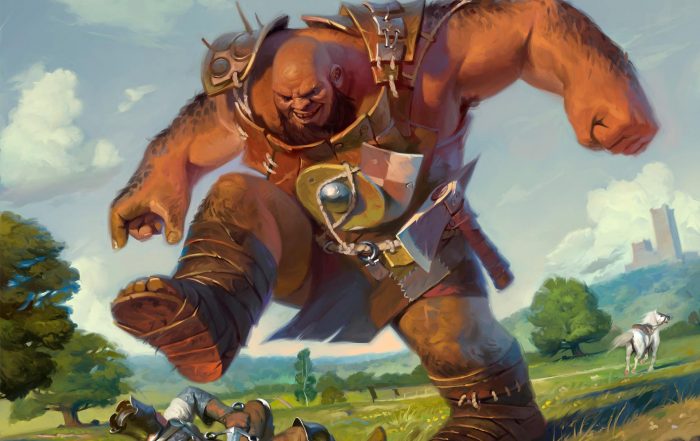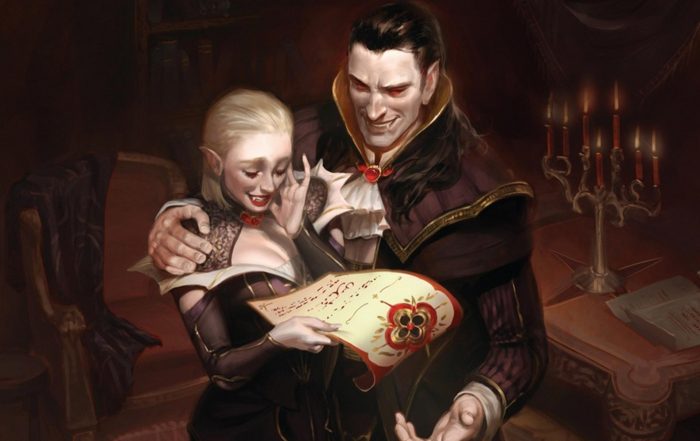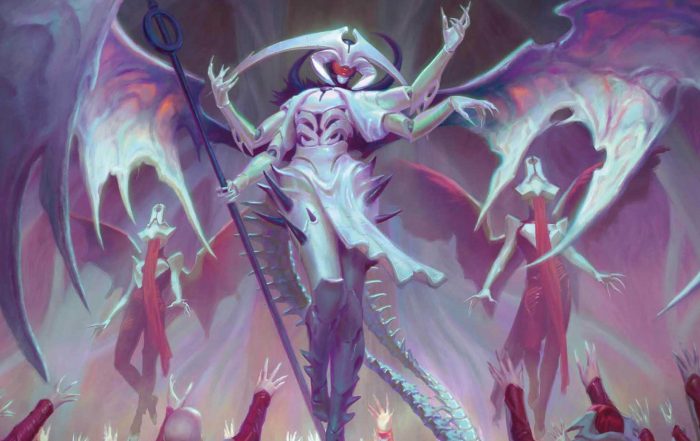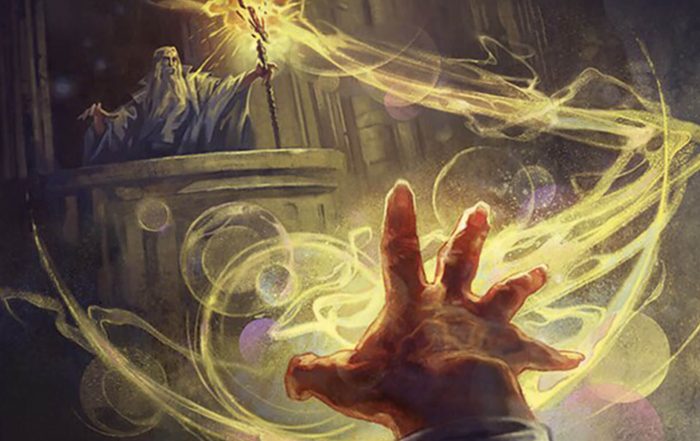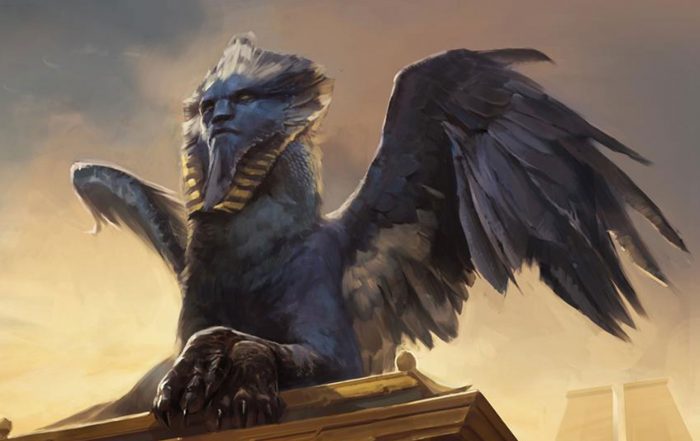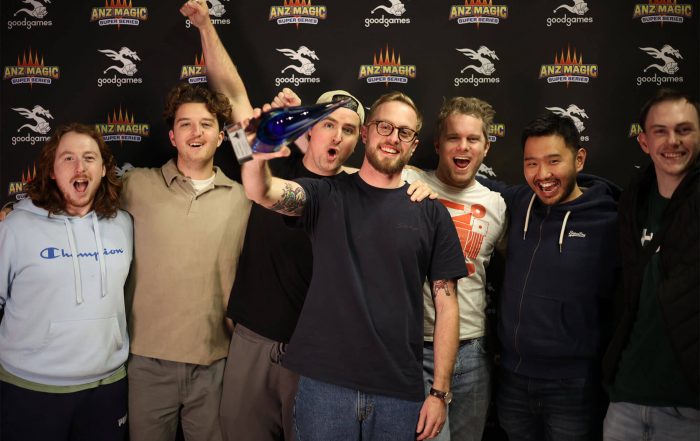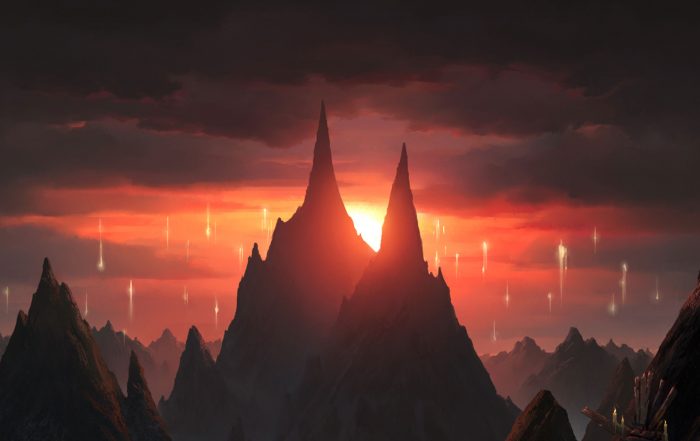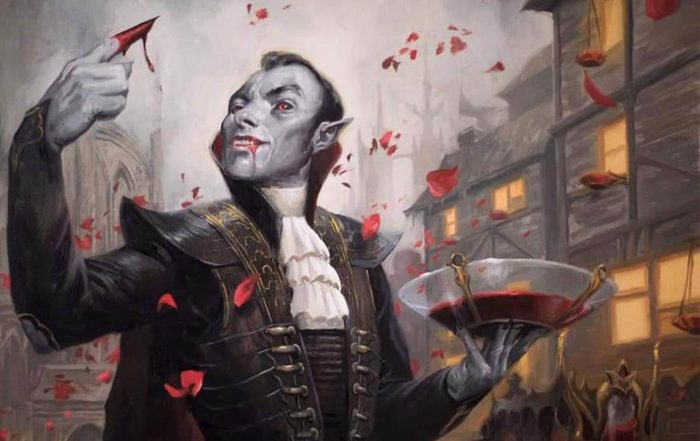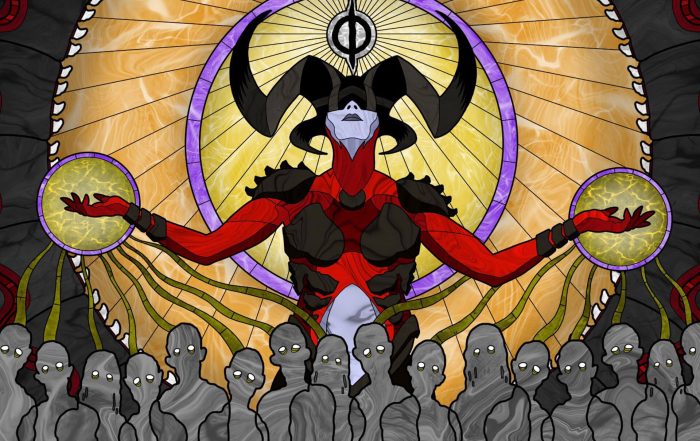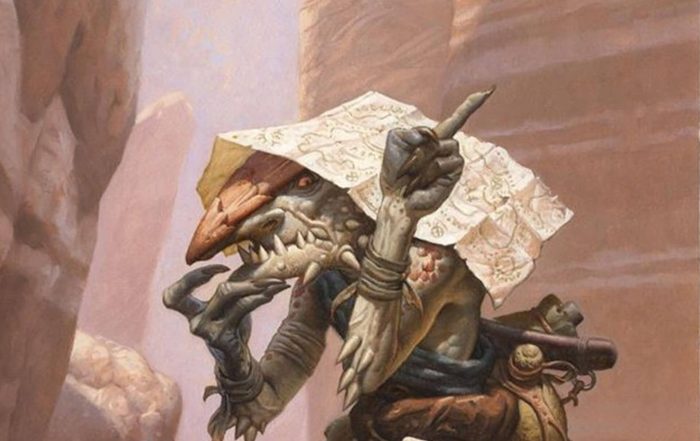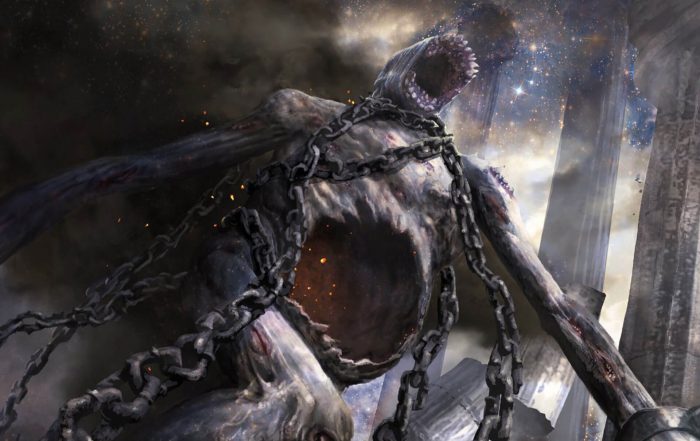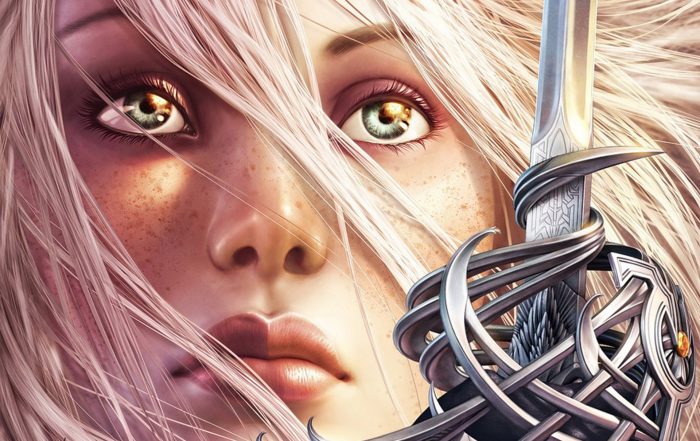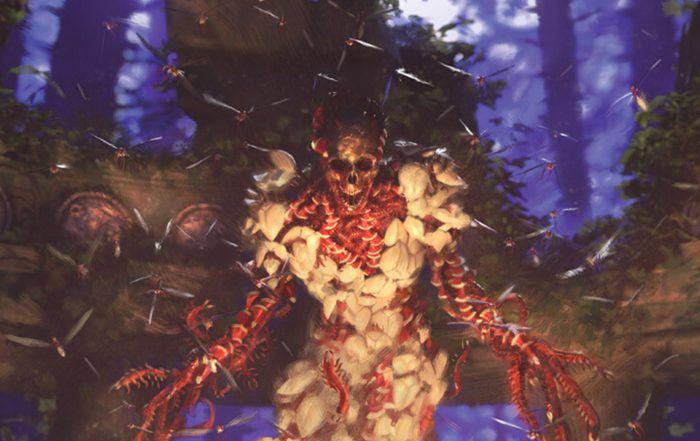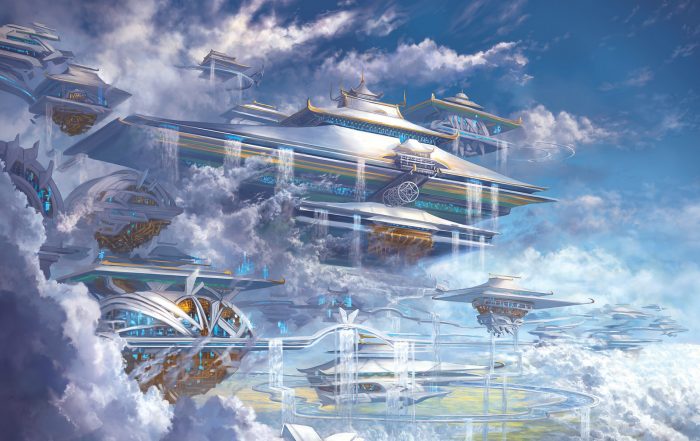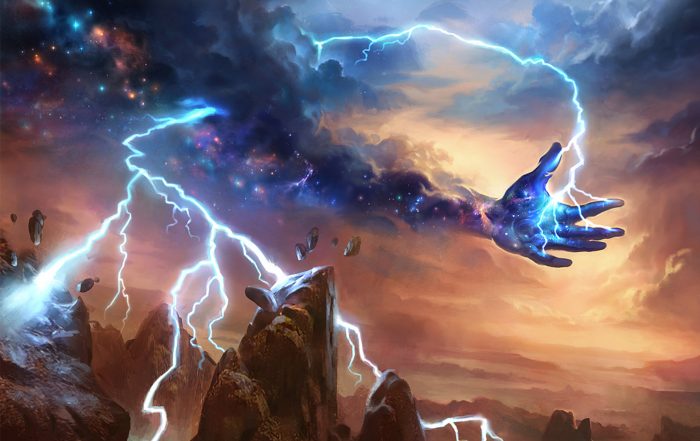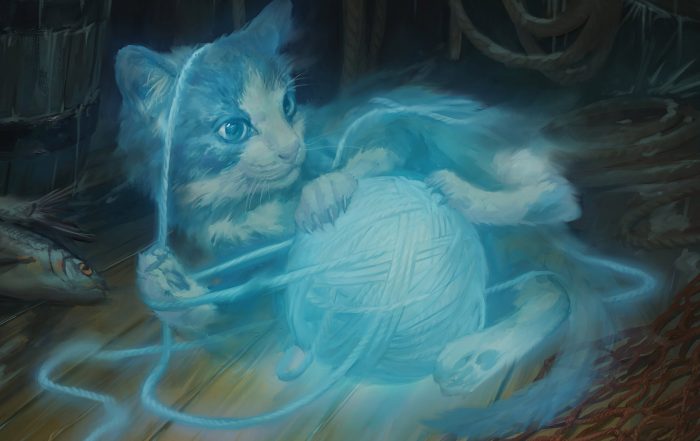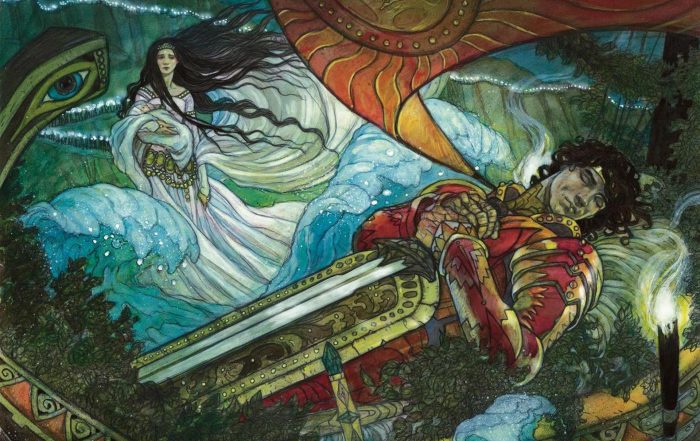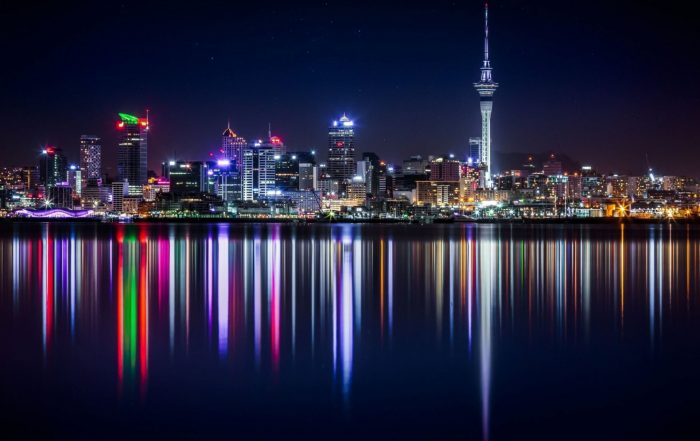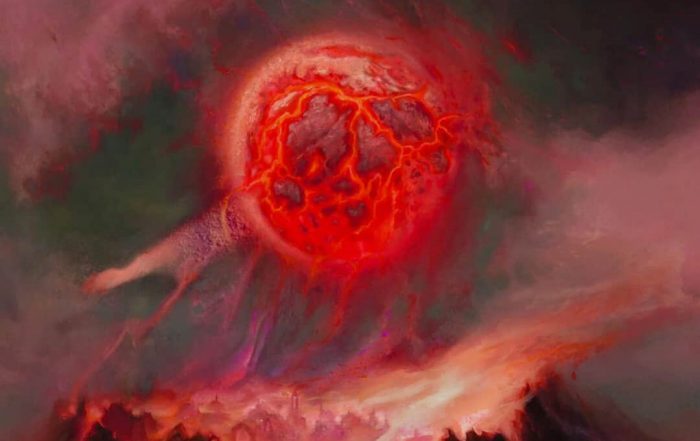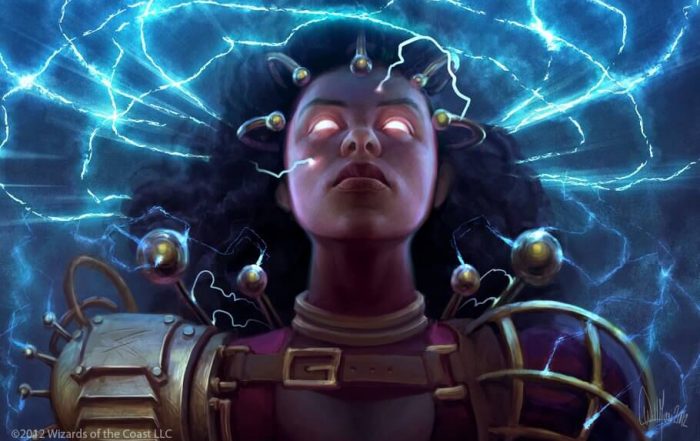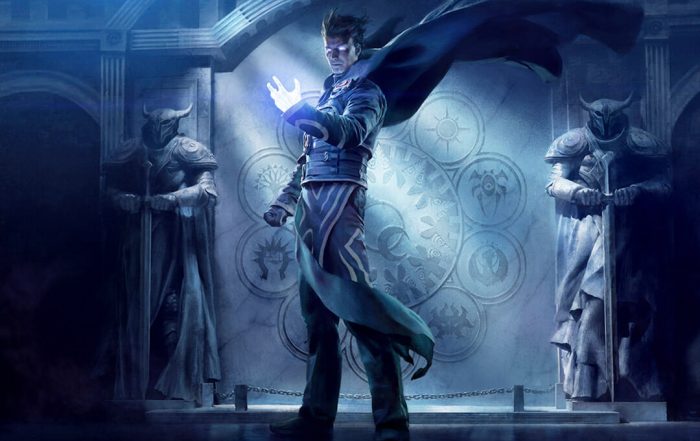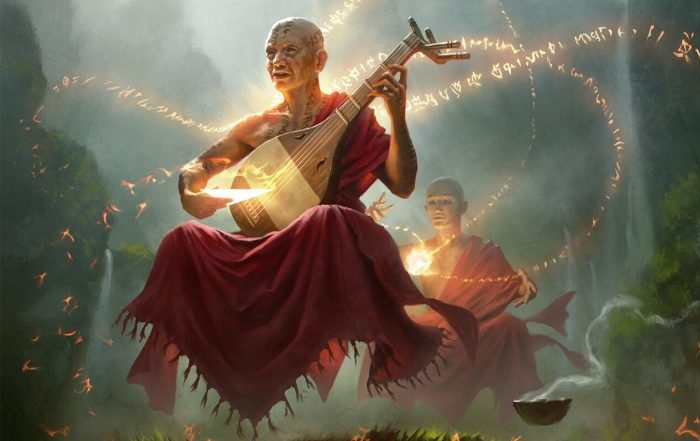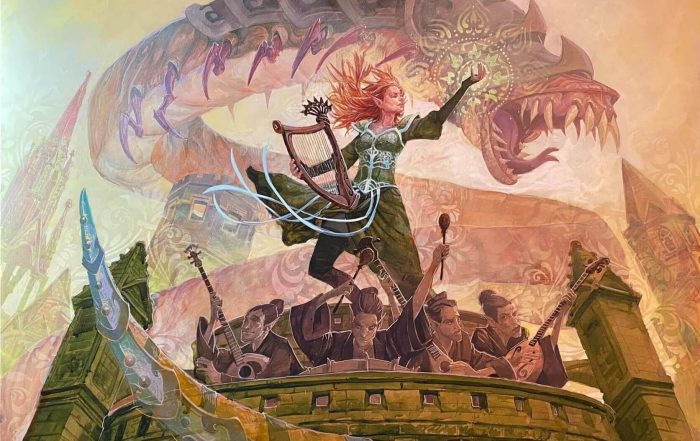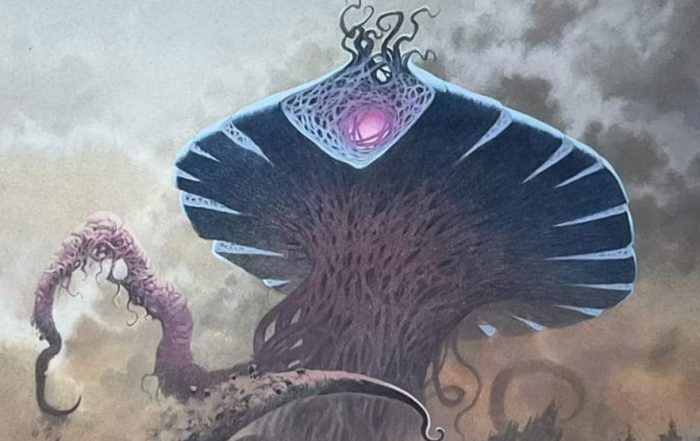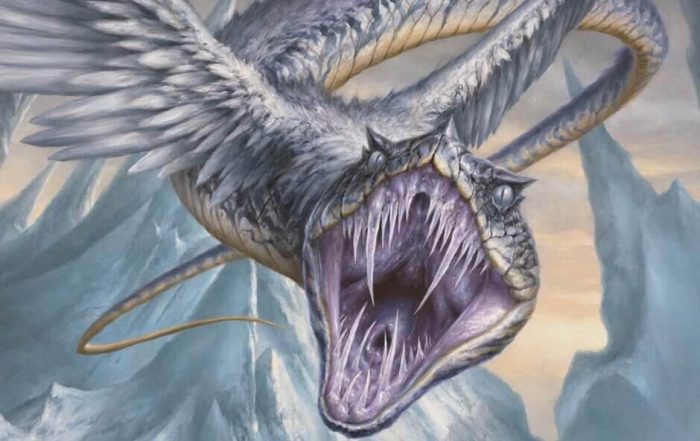Living End in Modern
Cycling Through Modern
Modern Living End
Author: Zen Takahashi
Hello everyone!
I recently competed in Pro Tour The Lord of the Rings, which was held in Barcelona! This was my third Modern Pro Tour, and after failing to do well in the first two, I wanted to make sure I prepared thoroughly for this one. I will go over my preparation and tournament experience in my next article, but today, I decided to instead write about the Living End deck that myself and Alex Rohan played at the Pro Tour. I finished 6-4 in the Modern portion, and I was happy with the deck choice and our list.
As part of my preparation, I tried my best to understand the archetype inside and out, as I found that while the deck is fairly straightforward to play when your draws are good and/or your opponent doesn’t have any interaction, it is quite tough to navigate when that isn’t the case. In this article, I will go over the decklist we came to and the card choices, and a deep dive into how to play the deck at a macro level and against the top decks in the format.

Card Choices – Main Deck
Our biggest innovation was to play three copies of Subtlety. The card is just well positioned against a large portion of the field right now.
It’s excellent vs Rakdos Scam (Dauthi Voidwalker) and 4c Omnath (Teferi, Time Raveler and Solitude), while also being solid against Mono Green Tron (Karn, the Great Creator and Ugin, the Spirit Dragon) and Golgari Yawgmoth (Endurance and Yawgmoth, Thran Physician).
Most people played three or four copies of Subtlety in the sideboard, but we felt that there were just too many cards in the format that needed to be answered in pre-board games, so that playing it in the main deck was worth it. Also, the card has gotten better with the addition of the landcyclers, as you now have more excess cyclers, and since the landcyclers are the bigger ones anyway, you’re happy to cycle them first (assuming you have a cascade spell in hand already) and pitch your blue cyclers to Force of Negation and Subtlety.
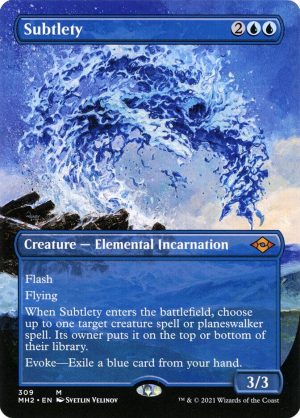
The stock list plays four copies of Living End, but we just felt that it was unnecessary.
There aren’t many counterspells going around in the format right now, and drawing multiple copies can lose you the game if you don’t draw Grief alongside it.
After playing a twenty-game set against Izzet Murktide and never needing the fourth copy, we decided to go down to three copies.
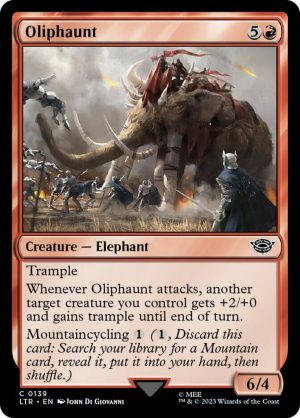
A lot of people were starting to go down to two, or even zero, copies of Waker of Waves. The card is definitely worse with the introduction of landcyclers as you have a greater volume of one-mana cyclers, but Waker is still important for digging for cascade spells and finding your sideboard cards. We ended up submitting three copies, but I think I’m closer to playing four than I am to playing two.
Before LOTR was released, we were playing eighteen lands in Living End compared to the stock twenty lands, as we found ourselves getting flooded all the time. With landcyclers, most people seem to prefer six or seven of them alongside fifteen lands, but we found that we were still getting flooded a lot, so opted for five landcyclers with fifteen lands. If I recall, I think I only got mana screwed once at the Pro Tour – twenty mana sources is more than enough.
We also tweaked the manabase a bit, and while they were slight, I was quite proud of our developments here. While playing the deck, there were two issues that regularly came up with the manabase:
- The shocklands were painful and having a non-blue land turned some otherwise keepable one-land hands into a mulligan. We addressed the former by adding two fastlands (Botanical Sanctum and Spirebluff Canal), and swapping out the second Breeding Pool for a fifth fetchland.
We found that you don’t actually need the second Breeding Pool like ever. Steam Vents is the red land you want to fetch first anyway, so alongside the first copy of Breeding Pool, you’ve already got double blue and a red and green mana, so you usually want your third and fourth land to be basic lands to minimise pain from your lands.
2. We couldn’t cut the second Steam Vents as we wanted three fetchable targets for Oliphuant, but cutting the second Breeding Pool meant we still had three fetchable targets for Generous Ent.
Adding the fifth fetchland was nice as deck thinning does matter when you cycle a lot, and we opted for a blue fetchland as fetching basic Island is usually better anyway and we had Generous Ent to find the basic Forest.
In terms of the latter issue, the first change was to cut the Sunken Ruins. Secondly, and this ended up being one of the best changes we made, was to cut the Boseiju, Who Endures for a second Otawara, Soaring City. Otawara is just simply fantastic in this deck – it’s your only way to deal with Teferi, Time Raveler once it’s resolved, while also being able to bounce Chalice of the Void at instant speed without giving your opponent a land. These changes meant that we had thirteen blue sources on turn one, while stock lists have eleven or twelve.
Card Choices – Sideboard
With a deck like Living End, you want to sideboard as little as possible in most matchups. We had multiple sideboard configurations, but in almost all of them, the recurring issue was that we had too many cards to sideboard in relative to the number of cards we were willing to board out (any more and it would make the deck too dysfunctional). This then led us down the path of playing narrower sideboard cards since we could afford to.
The split of Endurance and Leyline of the Void was primarily because they were good in different spots. For example, Endurance is good versus Izzet Murktide and 5c Creativity while Leyline of the Void is good versus Golgari Yawgmoth. We also found that the split was the hardest to fight against in the mirror. If they had a playset of Endurance, you could navigate around it with Grief and Subtlety, while if they had a playset of Leyline of the Void, you knew you could run wild if they didn’t start with one in play.
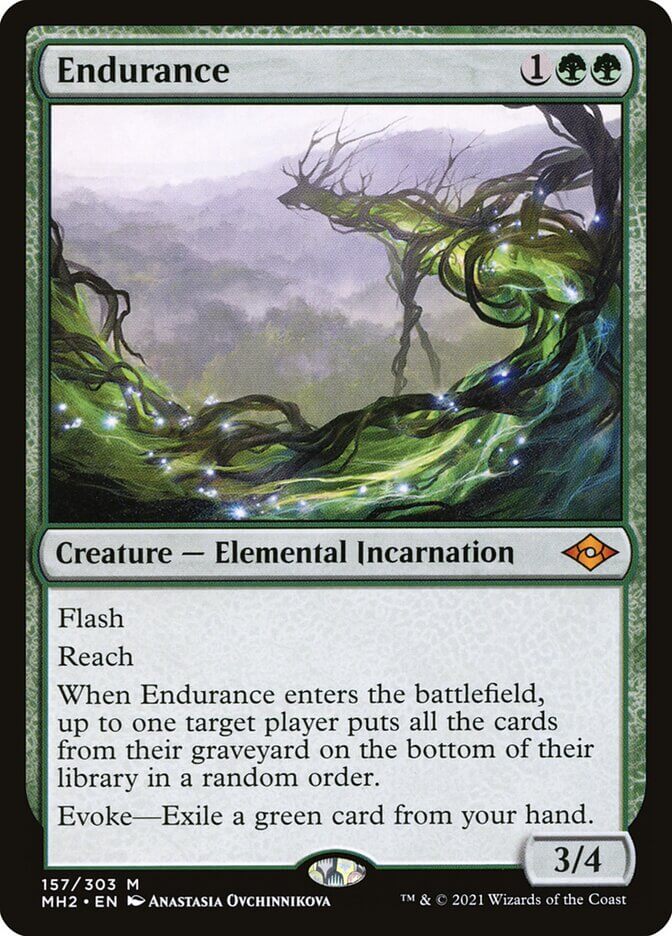

The two copies of Brazen Borrowers may seem counterintuitive to what I said right before about playing narrower sideboard cards.
The reason to play it was due to its flexibility during the game as opposed to its broad applications against hate cards.
For example, if your opponent didn’t have a Leyline of the Void in their opening hand, any copies of Foundation Breaker may just be dead while Brazen Borrower can still be cast on another one of their cards. Or against Golgari Yawgmoth, you can use it to bounce Chalice of the Void or Yawgmoth, Thran Physician the turn before you cast Living End.

The weird split of the artifact and enchantment hate was due to what I described around mapping against the field and being able to play narrower cards. Ingot Chewer is the best card against Relic of Progenitus and other artifact hate cards – the difference between one and two mana on Foundation Breaker is significant.
The Foundation Breaker is clunky, but it hits Urza’s Saga and Leyline of the Void. The two Force of Vigors were a second Ingot Chewer and a second Foundation Breaker until the day before decklist submission, but we found that against decks with Leyline of the Void, the two-mana answers (Brazen Borrower and Foundation Breaker) were almost always too slow on the draw. Sometimes even on the play as well. Having a turn one answer to Leyline of the Void was too important.
The Boseiju, Who Endures was a clever suggestion by Alex, and it was basically a way for us to play another artifact/enchantment answer “for free”, as we could swap it out for another land. It made our manabase marginally worse, but having an extra out to Chalice of the Void or Leyline of the Void was nice without diluting our deck too much. The Boseiju ended up winning me two games at the Pro Tour.
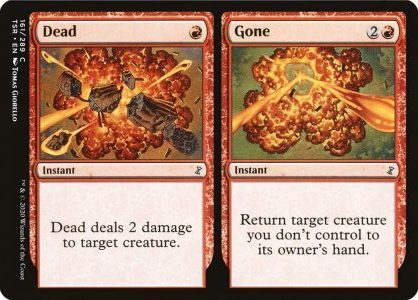
Dead//Gone isn’t commonly played anymore, but since we moved the Subtleties into the main deck, we could afford to play some. Ragavan, Nimble Pilferer is actually a big issue for Living End, especially when we are on the draw, as allowing them to get ahead on mana early lets them interact with us better, especially in post-board games.
Some people play Dismember, but against decks with Ragavan, your life total tends to matter a lot, so we preferred the split card. It is also decent against Dauthi Voidwalker, as it can either kill one in play to buy time, or if they sacrifice it in response to your Living End, you can kill it once it comes back before they can untap and cast your Living End off it.
Mystical Dispute was our final sideboard card. The card just simply isn’t well positioned in the metagame anymore – Izzet Murktide isn’t commonly played, and the 4c Omnath decks now have Delighted Halfling.
We were deciding between Mystical Dispute, Leyline of Sanctity and Orvar, the All-Form as our final sideboard card, and ultimately we opted for the Dispute as we thought Dimir Midrange might show up a bit, which ended up being the case as it was the sixth most popular deck at the Pro Tour.
Hands To Keep
There are three main components you are looking for in your opening hand:
- Three mana sources (including landcyclers)
- Tt least two drawcyclers
- A cascade spell
Having interaction in your opening hand is preferable, but unless it’s against a very specific matchup, it’s not a requirement.
You can also keep a hand that doesn’t have three mana sources or a cascade spell if you have lots of drawcyclers, but you cannot keep a hand that has neither, as then you’re asking too much of your cyclers. You also cannot keep a hand without at least two drawcyclers, as then you won’t be able to get your engine going.

In general:
- Going down to six cards is fine, but very rarely do you want to go down to five, as the pitch spells require a volume of cards in hand.
- One land hands without a landcycler are keepable if you have three cycle effects that are zero or one mana including a Street Wraith (on the play) or two cycle effects that are zero or one mana (on the draw). Essentially, you want to see four cards to find a second land. Remember, you also need to find your third land promptly as well.
- You cannot keep a hand with two Living Ends as then you only have one copy left in your deck.
- Four land hands are generally unkeepable on seven cards unless one of them is an Otawara, Soaring City and your three non-land cards are exactly two drawcyclers and a cascade spell.
- Ultimately, you need to consider the context of the matchup when making these decisions. For example, any hand with a Leyline of the Void in the mirror is probably a keep.
Sequencing Correctly
There is no rule of thumb around how to sequence your cyclers. Think carefully before taking any actions, since this deck is not at risk of going to time at all. You generally cycle on your opponent’s end step, especially if they have discard spells, since you don’t want to give them the option to take a better card that may be on top of your library.
The exceptions to cycling at their end step is usually when you’re looking for a land, a Grief or a black card to pitch to Grief, or you’re looking for an answer to something in play, like a Foundation Breaker for their Leyline of the Void.
You generally want to cycle in the following order – Striped Riverwinder -> Curator of Mysteries -> Street Wraith -> Architects of Will. You want to put the bigger creatures into the graveyard first, and Architects of Will is the best to hold as it is the smallest creature, but it also pitches to Grief, Force of Negation and Subtlety. The black cyclers are generally better to hold, as you have less cards to pitch to Grief than you do for Force of Negation and Subtlety.
Sometimes you want to cycle on your main phase, so you know how you want to sequence your lands. This mostly comes up when you keep a one land hand with Street Wraiths, or you’re cycling off a basic Island or Otawara, Soaring City, and you want more information before figuring out what to fetch.
You may want to hold your last blue cycler in hand in case you draw into a Force of Negation or a Subtlety.
Cycling two one-mana creatures is usually better than cycling a Waker of Waves as it puts two bodies into the graveyard and gives you more information with what you may want to look for with Waker of Waves later. However, if playing against one-shot graveyard hate like Relic of Progenitus, you usually want to prioritise keeping one-mana cyclers as they’re easier to put into the graveyard with Living End on the stack.
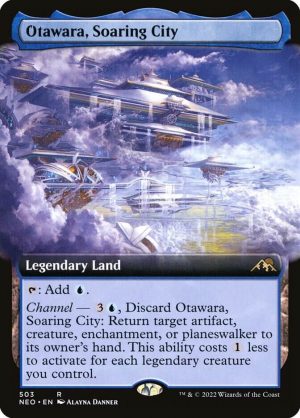
Your first three lands will generally involve two dual lands and a basic land, which gives you five sources of mana. In pre-board games, you’re usually looking for two or three blue sources, a red source and a green source. Having multiple blue sources is important as it lets you cycle multiple creatures in a row and also hardcast Force of Negation.
Ideally, your first two lands are also blue. Common patterns in pre-board games are Breeding Pool/Steam Vents/basic Island or Otawara, Soaring City.
In post-board games, if you’ve boarded in Endurance or Force of Vigor, you usually want two blue sources, two green sources and a red source on turn three. This is where fetching for basic Forest comes up more – though try to make the Forest your third land as you still want to lead with two blue lands (generally Steam Vents and Breeding Pool then basic Forest).
If you’re playing against Blood Moon, you want both basic lands and a red shockland as the third land – this means you generally have to choose between Stomping Ground (lets you cast Endurance) or Steam Vents (allows for better cycling and lets you cast Force of Negation).
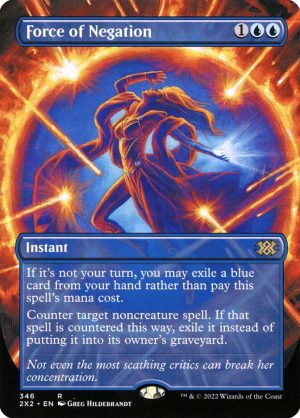
Be careful of how you tap your mana, and always think about what you may cycle into. Generally, you want to hold up blue mana as you may topdeck into more drawcyclers, a Force of Negation or a Subtlety, but also Dead//Gone, Endurance and Violent Outburst are key cards you can topdeck into.
Tips and Tricks
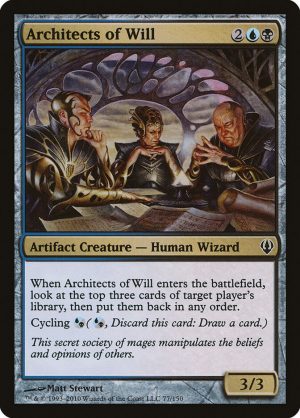
- When you return Architects of Will, you generally want to target your opponent since you’re likely ahead on board, so you want to cut them out of outs. However, if they have a fetchland in play, or you’re still looking for a specific card (like Force of Negation for a potential Ensnaring Bridge), then target yourself.
- If you are returning Architects of Will and Grief, you usually want to put the Architects’ trigger on the stack first, so that you can Grief them and see their hand before deciding how to re-order their top cards.
- Hardcasting Curator of Mysteries comes up often. It most commonly comes up when you have too many cycle effects in hand, in which case you want to prioritize the other ones, as you can cast Living End on turn three and hardcast Curator on turn four.
- You do not need to cast the Living End off your cascade spell. Sometimes you may just want to play Shardless Agent as an extra body, or use Violent Outburst as an anthem effect.
You want to generally hold Grief for as long as you can, but you need to cast it right before they can cast a card that is great against you.
For example, in pre-board games against Izzet Murktide, you’ll want to hold it until the turn you combo off as you’re only worried about counterspells, but in post-board games, you want to play it more aggressively as they may have Unlicensed Hearse that you want to take. Or against any deck with Teferi, Time Raveler, you would want to cast it on your turn three (on the play) or your turn two (on the draw).
If you have a Subtlety in the graveyard, you can respond to your opponent’s creature or planeswalker being cast by cascading with a Violent Outburst and stop it from entering play.
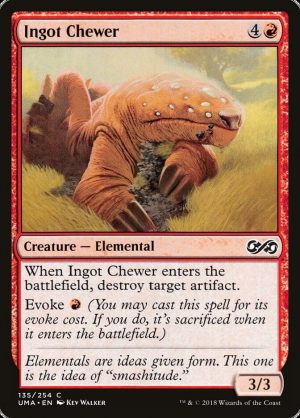
Otawara, Soaring City can bounce your own creatures as well. Most commonly, you bounce your Shardless Agent in response to a sweeper, so you can cascade again.
Usually, when you cast an evoke creature, you put the evoke trigger on the stack first, so the effect resolves before your creature goes to the graveyard. However, if you are looking to Grief their hand for a Hallowed Moonlight or Ingot Chewer/Foundation Breaker their Relic of Progenitus with a plan to cast a Violent Outburst in response to them casting Moonlight or popping their Relic, then put the evoke trigger on the stack second, so it resolves first, so if they let it die before they do their effect, you’ll be able to get it back with Living End.
You can cast the evoke creatures without a target, and it helps increase the number of creatures in your graveyard.
Active Player/Non-Active Player interactions come up a lot with this deck. The active player’s triggers go on the stack first, so the non-active player’s triggers resolve first.
If you cast a Shardless Agent or Violent Outburst on your turn, you will be the active player, while if you cast a Violent Outburst on their turn, they will be the active player.
Examples of this interaction include against 4c Omnath or 5c Creativity, if you are the non-active player, you can re-order the top of their deck with Architects of Will before they draw with Archon of Cruelty or Omnath, Locus of Creation.
In the Living End mirror, if you both return Architects of Will and you’re the active player, you will have to decide whether to target yourself or your opponent first, but then your trigger will resolve second. If you target them, they will then target you with their Architects of Will, but if you target yourself, then they will target themselves.
So basically you need to decide whether you would prefer you both re-order the top cards of your own decks, or to re-order each other’s decks. This likely depends on whether you are ahead or behind on board as you’re either looking for a card to come back or cut your opponent out of outs.
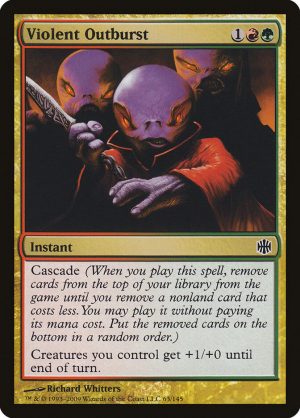
Always be conscious of how many copies of Living End you have left in your deck. If you are worried about cycling into a Living End, you can cast a cascade spell, and with Living End on the stack, continue to cycle with the guarantee that the Living End will be cast. You can also cast Violent Outburst on your upkeep if you’re worried about drawing into it on your drawstep.
Against decks with instant speed interaction like counterspells, Hallowed Moonlight or Endurance, if you Grief them and clear the path of any interaction, you usually want to cast Violent Outburst at their upkeep so that you don’t give them a chance to draw into an interaction piece – especially if you have an Architects of Will to return since you can re-order their top cards before they draw. If you know their deck doesn’t have any instant speed interaction, then you usually want to cast it at their drawstep, so your Grief has the option to also take what they drew into.
Against decks with Chalice of the Void, you generally do not want to deal with it until you’re about to cascade, since the one in play prevents them from casting any other copies they have. If you are on the play, you can Grief them on turn one to try to take it from their hand, but on the draw it’s not worth it since they would have cast it already if they had one (to play around Grief).
If your opponent plays a one-shot hate piece like Relic of Progenitus or Tormod’s Crypt, there are a few ways to beat it (assuming you don’t have Force of Negation).
The easiest way is that you have a Foundation Breaker or Ingot Chewer in hand already, in which case you hold off from cycling until you cast the evoke creature (put the evoke trigger on the stack first so you can kill the artifact before the creature goes into the graveyard).
The second way is to battle through it – this can either be by cycling a few creatures and casting a Living End and force them to pop their hate and start rebuilding again for a second Living End wave afterwards, or you hold off from cycling until turn four and cycle a few creatures at their end step, then cast a cascade spell on your turn.
With the Living End on the stack, they will presumably pop their hate, and then with the Living End still on the stack, you can cycle a few more creatures and still return a decent board. This is where holding your Street Wraiths and Striped Riverwinders is key, as they’re the best creatures to cycle after they pop their hate.
The final way is similar to beating Hallowed Moonlight with Grief, where if you draw into an artifact hate later on, you can cast it, and with it on the stack, they’ll pop their hate, and then you respond with a Violent Outburst in response.
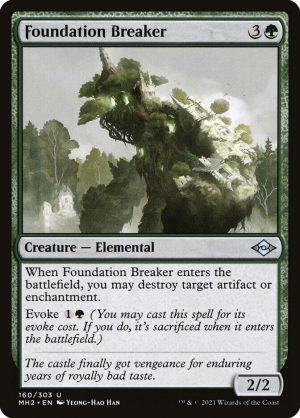
Against decks with Hallowed Moonlight, the best way to beat it is to draw a Grief or set up a Violent Outburst with Force of Negation back up on their turn.
If you don’t have a Violent Outburst, you usually want to Grief them on turn two so that if they have a Moonlight, you can take it and then cascade off Shardless Agent on turn three. Otherwise if you cast it on turn three, they’ll cast the Moonlight in response to your Grief, so you’ll get it out of their hand but it’ll still buy them a turn as you won’t be able to cascade that turn.
Against decks with Endurance, if you have a Grief in your opening hand, it’s worth going for it early and trying to hit their Endurance before you start cycling and building a graveyard. Otherwise, you can try to dig for a Subtlety to protect you on the turn you go off, or try to find a Grief to go with your Violent Outburst so you can cascade in response to them casting Endurance when you Grief them.
Be careful against decks with instant speed draw effects, as if you Subtlety their Endurance, they can put it on top then draw into it and cast it again on the same turn.
In a closed decklist tournament, if you are unsure whether your opponent may have some Chalice of the Voids or Leyline of the Voids, boarding in the two Brazen Borrowers and the Boseiju, Who Endures is a decent way to hedge.
Matchup Guides
Matchup Guide: Rakdos Scam
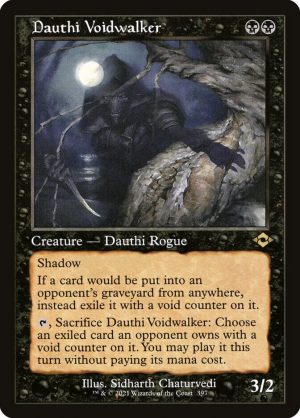
Against Leyline of the Void
No Leyline of the Void
The way we sideboard changes significantly based on whether we are on the play or draw, and whether they have Leyline of the Void or not. If we’re on the play, we don’t need Subtlety as we can beat Dauthi Voidwalker with a turn three Living End. If they don’t have Leyline of the Void, you want to keep in Force of Negation, as they usually have Nihil Spellbomb and/or Unlicensed Hearse instead, which are best answered before they hit play.
If you have a graveyard full of creatures already, but they have a Dauthi Voidwalker in play without summoning sickness or one in their graveyard, try to set up a Violent Outburst at the end of their turn, and hopefully have a board big enough that it can win in one attack before they get to untap with Dauthi Voidwalker. Alternatively, you can also answer the Voidwalker that comes back with a Dead//Gone or Brazen Borrower, or have a Force of Negation for the Living End when they try to cast it.
Play around Blood Moon in pre-board games, but they will usually board it out against you.
Do not cast Force of Negation if they have a Dauthi Voidwalker in play, as then they will be able to hold up Voidwalker as an answer to a Living End being cast.
Matchup Guide: Tron
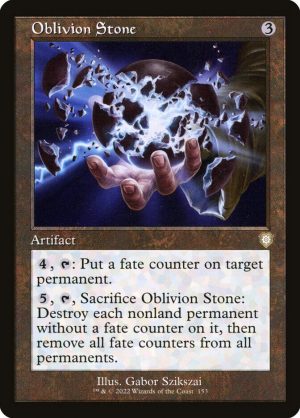
You need to go under them. It becomes increasingly harder to win once the game goes long, as they just go over the top of you.
Oblivion Stone can be annoying, as it buys them a turn, but it also forces you to have another cascade spell. If you are cascading off a Shardless Agent and have a Subtlety to return, you often want to target the Shardless Agent on the stack and put it on top of your library so that you have another cascade spell. This also applies against decks with sweepers like Supreme Verdict.
Matchup Guide: Temur Rhinos
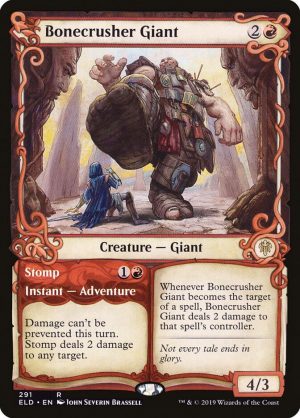
In pre-board games, the only card you really need to play around is Force of Negation, so you can take your time to set up a big Living End and/or get them to act first and use Living End as both a wrath and for returning your team.
It is important to not go down too low on life, as they can burn you out with Bonecrusher Giants and Fire//Ice.
Subtlety is your best answer to Endurance. If you don’t have a Subtlety, you can either Grief them on turn one and try to hit Endurance before you build a graveyard, or if you have a Violent Outburst, you can wait to Grief them on the turn you want to go off, then cast Violent Outburst in response to their Endurance.
Matchup Guide: 4c Omnath
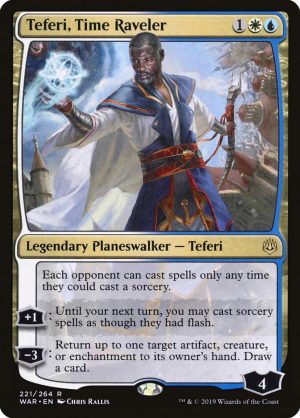
PLAY + DRAW
+1 Subtlety
Grief and Subtlety are key to stop Teferi, Time Raveler, especially if they have Delighted Halfling and you can’t Force of Negation it.
Going for a quick Living End is risky, as they can pitch Solitude in response, and it might then buy them enough time to cast Omnath, Locus of Creation and go over the top of you. If possible, you want to wait to present a bigger board.
They have a wide variety of hate post-board – Endurance, Chalice of the Void, Hallowed Moonlight, Flusterstorm and Dovin’s Veto are all commonly played. You are not beating them if the game goes too long, so your best bet is to try to get a feel of what you think they have, and aggressively take risks and try to play around the one or two hate pieces you think they have and ignore the rest. Having Grief significantly helps as you then know exactly what you need to play around.
Holding Subtlety for their pitched Endurance or Solitude in response to a Living End is crucial.
Matchup Guide: Golgari Yawgmoth
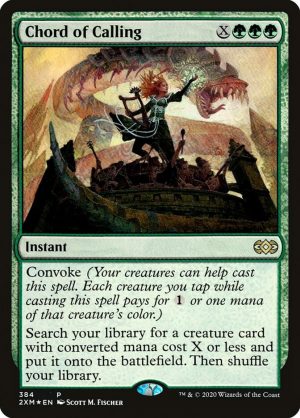
Use your Griefs to go after Chord of Calling or Eldritch Evolution. You don’t want to put creatures into their graveyard.
You often need a big Living End because they can chump block a few big attackers and buy enough time to set up a Chord of Calling for Yawgmoth, Thran Physician and go off. However, counterintuitively, you also need to try to go off quickly as once they have Yawgmoth in play, they can sacrifice their board in response to a Living End.
Matchup Guide: Amulet Titan
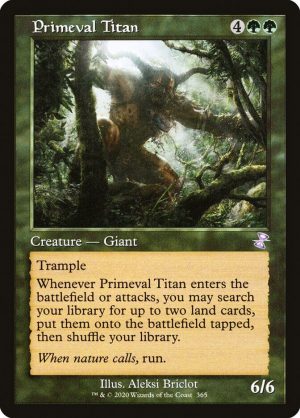
Subtlety is the most important card as it stops both Endurance and Primeval Titan. Sometimes you can just win on the spot if they Summoner’s Pact for a Primeval Titan aggressively, and they don’t actually have enough lands at upkeep to pay for the Pact if you stop their Titan.
Street Wraith is unblockable if they have Dryad of the Ilysian Grove in play.
In post-board games, you want to try to go off before they can Summoner’s Pact for an Endurance.
Matchup Guide: 5c Creativity
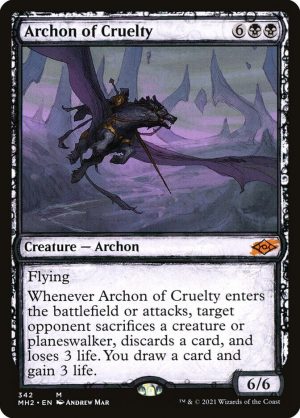
If you have a graveyard full of creatures already, but they have an Archon of Cruelty in theirs, try to set up a Violent Outburst at the end of their turn, and hopefully have a board big enough that you can win in one attack before they get to untap with the Archon.
When you are on the play, try to cast a Grief on turn one to cut them off, discarding an Archon of Cruelty to hand size at their end step.
If they have multiple Archons in their graveyard, you can beat it with two cascade spells – cast the first one, which will return their Archons, and sacrifice creatures to its triggers and use the discard triggers to put more creatures into the graveyard. Then, cast a second cascade spell, which will remove their Archons and return the creatures you sacrificed and discarded to their Archon triggers.
You need to go for a Living End fairly aggressively, as if the game goes long, they’ll be able to beat a resolved Living End by putting multiple Archons into play.
Otawara, Soaring City can fizzle an Indomitable Creativity that is targeting an artifact.
Turn the Earth is annoying to play against as Grief only hits one side of it, and they can play around Force of Negation by timing it properly. The only way to beat it is to try to cycle as much as you can and to cascade at a time that is awkward for them – either they can’t cast it and flash it back, or in response to them flashing it back.
Matchup Guide: UR Murktide

PLAY + DRAW
+2 Dead//Gone
+2 Endurance
-3 Subtlety
(you may want Ingot Chewer and Foundation Breaker if they have Chalice of the Void and/or Unlicensed Hearse)
They usually have six or seven counterspells in the main deck, so the plan is to either go off with protection (Grief or Force of Negation), or overload on their countermagic by casting multiple cascade spells (Violent Outburst at their end step into Shardless Agent on your main phase).
Ragavan, Nimble Pilferer is secretly their best card against you. Often, they get bottlenecked on mana, and they can’t hold up multiple counterspells or cast an Expressive Iteration to dig for interaction while still holding up a counterspell. Ragavan allows them to do so by ramping them. I usually like to cast Shardless Agent on turn three if they have Ragavan in play, even if you know they have a counterspell, just to get it out of their hand, and you get a 2/2 to block the monkey.
You usually want to sacrifice your fetchland or cycle your Generous Ent in response to a Ragavan trigger if you’re looking to grab a land that you only have one copy of (Forest, Island, Stomping Ground, Breeding Pool).
If they are not pressuring you, then you can often just make land drops and try to cascade once you can play around Spell Pierce/Flusterstorm. However, don’t give them too much time, as you don’t want them to be able to chain Expressive Iterations while still having mana up for counterspells.
Endurance is great against them, especially now that Ledger Shredder isn’t commonly played. It also gets around Spell Pierce, Flusterstorm and Force of Negation. Post-board when they cut their removal spells, you can sometimes win by just hardcasting a turn three Endurance into a turn four Curator of Mysteries and look to beat them down.
Conclusion

I hope you enjoyed this article as I went over in-detail about the Living End deck I played at Pro Tour The Lord of the Rings! As I mentioned at the beginning, my next article will be a tournament report on the Pro Tour itself – a mix of Magic strategy and stories from the testing house during the week leading up to the event, and the Pro Tour weekend itself!
Till next time!
Zen Takahashi
@mtgzen on Twitter
About the Author
Zen Takahashi is a seasoned writer and mainstay on the Three for One Trading writing team. He is an avid Eternal player from Auckland, New Zealand and enjoys competing in local Legacy events and playing Old School over webcam with friends.
Previously, he was a Silver Pro for multiple years and his results included five Grand Prix Top 8s, a 27th place at Pro Tour Amonkhet, three consecutive online Regional PTQ wins, and he co-created the Modern Dredge deck.
Nowadays though, he primarily plays Legacy, his favorite format, but he also branches out into Pioneer and Modern.

More Articles by Zen Takahashi
AUS/NZ Regional Championship Report – Top 8
Zen qualified for the Pro Tour with Bant Toxic at the Australian/New Zealand Regional Championship! Now here’s all about his tournament experience, the preparation, the team and the many, many deck choices available.
Bant Toxic Guide
Learn all about Bant Toxic in Standard with Zen: The game plan, what hands to keep, how to sequence your turns, tips and tricks, and how to approach each of the major matchups.
Mono Red in Standard
The perfect preparation for our next Store Championship! Zen gives you all the information you need to win in Standard with Mono Red Aggro. As usual he gives you a small run down of the deck together with a lot of different sideboard guides against almost every meta deck of the format.
Rakdos Midrange in Pioneer [Update]
Mistakes have been made and lessons have been learned, so it’s time for an update on Zen’s Rakdos Midrange deck in Pioneer. This time with a very detailed matchup guide on the current Pioneer Meta with sideboard options for each popular deck you’ll encounter.
World Championships 2023 Report
Zen Takahashi is back with a full report of his time during the Magic: The Gathering World Championships 2023 in Las Vegas! Learn everything about his intense preparations, his great team, his tight schedule and tasty dinners.
Rakdos Reanimator Guide [2023]
Zen Takahashi played Rakdos Reanimator at the Magic: The Gathering World Championships in Las Vegas! In his latest article, he goes in-depth about how to play the deck, what to look out for in popular matchups and explains how to make best use of The Cruelty of Gix.
The Lord of the Rings Pro Tour Report
Zen Takahashi is back with another tournament report! This time it's all about Lord of the Rings in Barcelona. In this detailed article, he goes over his draft preparations and the overall fantastic weekend with his team and friends.
Modern Living End Primer
Zen Takahashi played Living End during the Lord of the Rings Pro Tour in Barcelona. Now he's ready to share some insights on this powerful Modern deck including the card choices, what hands to keep and how to sideboard against different opponents.
Regional Championship Report – Sydney
Zen Takahashi played Mono White Humans in Pioneer during the Regional Championships in Sydney! Find out all about what deck he played, what useful tips and tricks he had up his sleeves and how it all went down in his latest article! Bonus insider info on where to get the best truffle pasta in Sydney!
Pro Tour March of the Machine Tournament Report
Zen Takahashi writes about his experience during the Pro Tour in Minneapolis! Here you can read all about what deck he played, his preparation and a full report on the Pro Tour weekend with his team.
Rakdos in Standard
Our author Zen Takahashi competed at the Pro Tour in Minneapolis, shortly before re-qualifying for another Pro Tour. Both times he played Rakdos: Reanimator and Midrange! In his latest article, he compares both experiences and goes over each of the two decks in detail.
Standard Grixis Midrange Primer
Zen won the Australasian Championship with his Standard Grixis Midrange deck a few days ago. Lucky for us, he didn't take a break and wrote an in-depth primer for the deck including sideboard tips and card choices for us! Prepare yourself for future Regional Championships or Qualifiers, because you'll be either playing this deck or playing against it.
Australasian Regional Championships Report
Zen Takahashi won the Australasian Championship and qualified for the Pro Tour and the World Championship! Now we are getting an in-depth look into how he prepared for the tournament and how the games played out in an old-fashioned tournament report.
Boros Burn in Modern
Our author Zen Takahashi is feeling nostalgic, so it was time for a break from Pioneer and time for Modern Burn, Modern Boros Burn, to be precise! As usual Zen gives you a detailed overview of the deck, nice tips and tricks on how to maneuver it around the Modern meta decks and a useful sideboarding options, based on his experience.
Rakdos Midrange in Pioneer
Zen Takahashi is not done with Pioneer yet! For the Regional Championschip in Sydney, he and his team of over 10 other players tested different decks extensively until they came up with their own twist on the popular Rakdos Midrange deck.
Mono White Humans in Pioneer
Zen Takahashi takes a closer look at his newest favorite deck in Pioneer: Mono White Humans! As usual, you can expect in-depth tips and tricks as well as a sideboard guide from Zen, who was already very successful with his Pioneer decks in his Regional Championship Qualifiers.
Best Cards in Modern – Multicolor [2022]
We asked our seasoned team of authors a tough question: What do they think are the best ten multicolored cards in Magic the Gathering's Modern format. We then went a step further and created a Top 5. Learn what they think about the very best cards of one of the game's most popular formats.
Best Cards in Modern – Lands [2022]
We asked our seasoned team of authors a tough question: What do they think are the best ten lands in Magic the Gathering's Modern format. We then went a step further and created a Top 5. Learn what they think about the very best cards of one of the game's most popular formats.
Best Cards in Modern – Artifacts [2022]
We asked our seasoned team of authors a tough question: What do they think are the best ten artifacts in Magic the Gathering's Modern format. We then went a step further and created a Top 5. Learn what they think about the very best cards of one of the game's most popular formats.
Mono Red Primer for Pioneer
This time, Zen Takahashi writes in depth about his Regional Championship Qualifier Deck: Mono Red in Pioneer! That means we get a Primer for Mono Red Burn and Mono Red Frenzy. He also doesn't spare any details about key matchups in Pioneer and helps you to play your way around them!
Mono Blue Spirits in Pioneer
Zen Takahashi can't get enough of Pioneer, which means we have another great Pioneer Primer for you: Mono Blue Spirits! Read all about mulligans, sideboarding and most importantly: How to sequence your turns.
Best Cards in Modern – White [2022]
We asked our seasoned team of authors a tough question: What do they think are the best ten white cards in Magic the Gathering's Modern format. We then went a step further and created a Top 5. Learn what they think about the very best cards of one of the game's most popular formats.
How to Build Mono Red in Pioneer
After the success of his Blue-Red Ensoul article, Zen is back with another Pioneer primer: Mono Red! In his latest work, he excessively tested Devotion, Wizard and Burn decks. You can find all his discoveries and recommendations right here:
Legacy Reanimator 2022
If you are looking for a Reanimator Primer in Legacy, look no further! In his article, Zen Takahashi gives you everything you need to know about Reanimator: Which hands to keep? What are your opponents playing? How to sideboard? All these questions and more will be answered right here.
Blue-Red Ensoul in Pioneer
After a longer break, our author Zen Takahashi is excited to get back into Pioneer and crush the first PTQ season with his version of Izzet Ensoul. You can read all about the new and old decklist as well as mulligan strategies and other tips right here!
Best Cards in Modern – Green [2022]
We asked our seasoned team of authors a tough question: What do they think are the best ten green cards in Magic the Gathering's Modern format. We then went a step further and created a Top 5. Learn what they think about the very best cards of one of the game's most popular formats.
Auckland Eternal Weekend Report
Our author, Zen Takahashi, spent an Eternal Weekend in Auckland where he played tournaments of Vintage, Old School and Legacy. Real Power Nine, no proxies allowed! You can read all about what decks he played and how it went right here on our blog!
Best Cards in Modern – Red [2022]
We asked our seasoned team of authors a tough question: What do they think are the best ten red cards in Magic the Gathering's Modern format. We then went a step further and created a Top 5. Learn what they think about the very best cards of one of the game's most popular formats.
Top Ten Decks in Legacy 2022
In our latest article, Zen Takahashi analyses the best Legacy decks and comes up with his Top 10 Legacy decks of 2022. If you are curious to find out if your deck made the cut, or simply interested in what's going on in Legacy these days, keep on reading right here!
Best Cards in Modern – Black [2022]
We asked our seasoned team of authors a tough question: What do they think are the best ten black cards in Magic the Gathering's Modern format. We then went a step further and created a top 5. Learn what they think about the very best cards of one of the game's most popular formats.
Rainbow Dredge in Modern
Today’s article is all about Dredge in Magic: The Gathering, more specifically, Dredge in Modern. Zen Takahashi, one of the creators of Rainbow Dredge, took a look at the history of the deck and its current state in the meta. He’s also going over different iterations of the deck, as well as all the current sideboard options available.
Best Cards in Modern – Blue [2022]
We asked our seasoned team of authors a tough question: What do they think are the best ten blue cards in Magic the Gathering's Modern format. We then went a step further and created a top 5. Learn what they think about the very best cards of one of the game's most popular formats.
Blue Zenith in Legacy
Zen takes a look at a new deck that did surprisingly well in recent Legacy online events. Green Sun's Zenith and blue Counterspells are the engine in this midrange powerhouse.
Deck Spotlight Modern: Golgari Yawgmoth
Zen takes us to a wonderful world full of creatures, combos and one ofs in the Magic the Gathering Modern format. Chord of Calling is the name of the game. Let's go!
Deck Spotlight Legacy: UW Omni-Tell
Zen talks about one of his favorite decks for paper Legacy: Blue-White Show and Tell Omniscience combo. The best thing about it: It does not need a single card from the restriced list!
Bant Miracles in Post-Modern Horizons 2 Legacy
Zen Takahashi shares his thoughts about his favorite Legacy Deck – Bant Miracles in a Post-Modern Horizons 2 world. He explains which cards he added from the new set and how matchups have changed.
